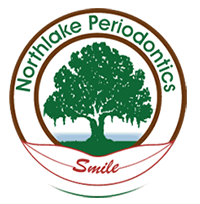ORAL CANCER EXAM
According to the American Cancer Society, over 30,000 cases of oral cancer are diagnosed each year, with over 7000 of these cases resulting in the death of the patient. Fortunately, oral cancer can be diagnosed with an annual cancer exam provided by Dr. LaSalle. If caught early, oral cancer can be effectively treated.
Oral cancer is a pathologic process, which begins by producing no symptoms, making it hard to recognize without an exam. There are many types of oral cancer, including teratoma, adenocarcinoma and melanoma. The most common form of oral cancer is malignant squamous cell carcinoma, which typically originates in the lip and mouth tissue. There are many other places in which oral cancers occur, including: the tongue, salivary glands, throat, gums, and face.
What to Expect
The oral cancer examination is completely painless. Dr. LaSalle will look for abnormalities and feel the face, glands and neck for unusual bumps. Some of the signs that will be investigated are red patches and sores. Red patches on the floor of the mouth or the front of the tongue and bleeding sores, which fail to heal easily, can be indicative of cancerous changes. Leukoplakia is a hardened white or gray, slightly raised lesion that can appear inside the mouth and may be cancerous. She will look for signs of these, as well. Finally, soreness, lumps or the general thickening of tissue anywhere in the throat or mouth can signal pathologic signs and will be examined.
If abnormalities, lesions, lumps or leukoplakia are apparent, Dr. LaSalle will implement a treatment plan that is right for you. Treatment options vary according to the precise diagnosis, but may include: excision, radiation therapy and chemotherapy.
It is also important to note that over 75% of oral cancers are linked with destructive habits such as smoking, tobacco use and excessive alcohol consumption. Dr. LaSalle can provide you with literature and options about quitting dangerous behaviors such as tobacco use.
According to the American Cancer Society, over 30,000 cases of oral cancer are diagnosed each year, with over 7000 of these cases resulting in the death of the patient. Fortunately, oral cancer can be diagnosed with an annual cancer exam provided by Dr. LaSalle. If caught early, oral cancer can be effectively treated.
Oral cancer is a pathologic process, which begins by producing no symptoms, making it hard to recognize without an exam. There are many types of oral cancer, including teratoma, adenocarcinoma and melanoma. The most common form of oral cancer is malignant squamous cell carcinoma, which typically originates in the lip and mouth tissue. There are many other places in which oral cancers occur, including: the tongue, salivary glands, throat, gums, and face.
What to Expect
The oral cancer examination is completely painless. Dr. LaSalle will look for abnormalities and feel the face, glands and neck for unusual bumps. Some of the signs that will be investigated are red patches and sores. Red patches on the floor of the mouth or the front of the tongue and bleeding sores, which fail to heal easily, can be indicative of cancerous changes. Leukoplakia is a hardened white or gray, slightly raised lesion that can appear inside the mouth and may be cancerous. She will look for signs of these, as well. Finally, soreness, lumps or the general thickening of tissue anywhere in the throat or mouth can signal pathologic signs and will be examined.
If abnormalities, lesions, lumps or leukoplakia are apparent, Dr. LaSalle will implement a treatment plan that is right for you. Treatment options vary according to the precise diagnosis, but may include: excision, radiation therapy and chemotherapy.
It is also important to note that over 75% of oral cancers are linked with destructive habits such as smoking, tobacco use and excessive alcohol consumption. Dr. LaSalle can provide you with literature and options about quitting dangerous behaviors such as tobacco use.
